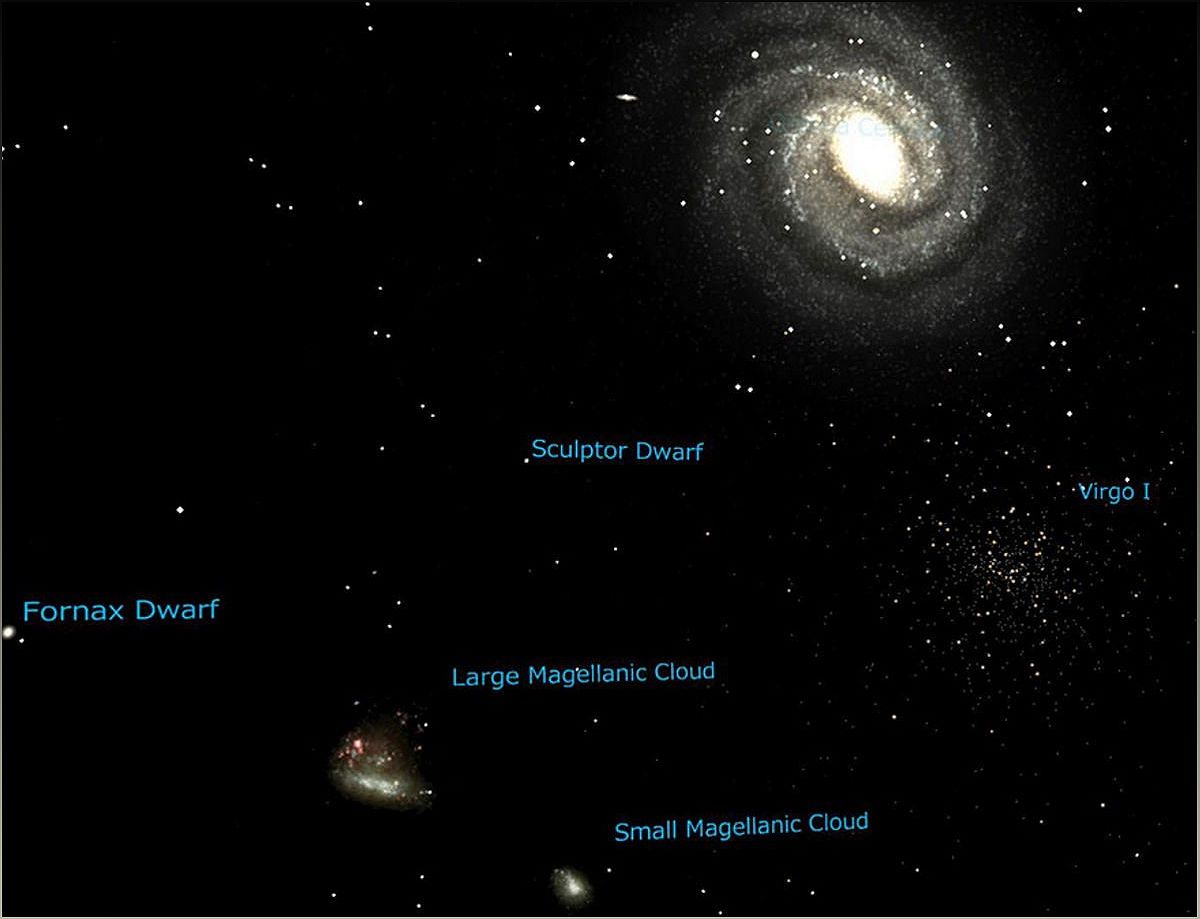In the vast expanse of the universe, astronomers have made an intriguing discovery - the faintest satellite of the Milky Way. This structure, composed of gas and stars, is gravitationally bound to our galaxy and extends over a radius of 10 light years. With less than a hundred stars, it raises the possibility that it is the remnants of a dwarf galaxy destroyed by the tidal forces of the Milky Way. Join me on this cosmic journey as we delve into the details of this remarkable finding and unravel the mysteries of our galactic neighborhood.
Unveiling the Faintest Satellite
Explore the groundbreaking discovery of the faintest satellite of the Milky Way and its implications.
Using observations in the ultraviolet and infrared range, astronomers have detected a structure gravitationally bound to our galaxy - the faintest satellite of the Milky Way. This intriguing structure, consisting of gas and stars, extends over a radius of 10 light years. With less than a hundred stars, it is believed to be the remnants of a dwarf galaxy destroyed by the tidal forces of the Milky Way.
What are the implications of this discovery? How does it contribute to our understanding of galactic evolution? Join me as we delve into the details of this remarkable finding and unravel the mysteries of this faint satellite.
A Window into Dwarf Galaxies
Discover the significance of studying satellite galaxies and their role in understanding dark matter and galactic evolution.
Satellite galaxies, like the faintest satellite of the Milky Way, provide a unique window into the study of dark matter and the history of our galaxy's development. These dim and compact objects, including star clusters and intermediate structures, offer valuable insights into galactic evolution.
By examining the properties of these satellite galaxies, scientists can reconstruct the history of our galaxy and test theories of galactic evolution. Furthermore, they contribute to our understanding of the elusive dark matter that shapes the structure of the universe.
Let's delve deeper into the significance of studying satellite galaxies and the valuable information they provide about the cosmos.
UMa3/U1: The Faintest Satellite's Characteristics
Uncover the characteristics of UMa3/U1, the faintest satellite of the Milky Way, and its intriguing properties.
The newly discovered satellite, named Ursa Major II/UNIONS 1 (UMa3/U1), is located approximately 81,000 light years from the center of the Milky Way. It resides within the halo of our galaxy, an area of diluted hot gas beyond its visible part.
UMa3/U1 has a diameter of 9.7 light years and contains only 16 solar masses worth of stars. With an estimated 50-60 luminaries, these stars are metal-poor and exhibit spectral characteristics suggesting an age of approximately 11 billion years.
What do these characteristics reveal about the origins and nature of UMa3/U1? Let's explore the intriguing properties of this faint satellite in more detail.
UMa3/U1: Remnants of a Dwarf Galaxy
Unravel the evidence supporting the theory that UMa3/U1 is the remnants of a dwarf galaxy destroyed by the Milky Way's tidal forces.
Based on its orbit and location, astronomers believe that UMa3/U1 did not form in close proximity to the Milky Way but was instead attracted by its gravitational pull. This suggests that UMa3/U1 may be the remnants of a dwarf galaxy that fell victim to the tidal forces exerted by our galaxy.
With its small size, metal-poor stars, and location within the Milky Way's halo, UMa3/U1 provides compelling evidence for this theory. Join me as we delve into the details and unravel the story of this dwarf galaxy's demise.

